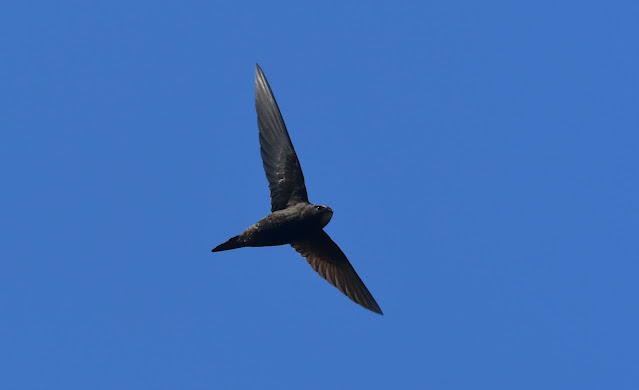A walk along the East Bank at Cley is always a must for me when I'm in Norfolk. With my parents living so close to it I will usually do it several times during a stay. There is always something decent to see and through the different seasons you get a really good variety. The wintering geese have left for the time being, barring the Greylags and a few Canadas and Egyptian, but the summer migrants have arrived.
I was lucky to watch a Hobby fly over as it was catching insects. The warblers are in too, in the form or Sedge and Reed. The sound coming out of the reed bed is something to behold as the competition for space and territory takes a grip. I picked up the ping of a group of Bearded Tits. I always hope to see some when I'm here, but that is never an easy feat. Being in the right place at the right time, or good fortune is usually involved. This time they were working their way through the reeds close to the edge. The odd one would break cover and dive over the top of the reeds. A very good addition to the year list.
With Curlews, Lapwings, Redshank, a lone Spoonbill, Skylarks and the overflying Terns at the beach end it really was a great couple of hours spent here. Come the autumn time the waders will be back and the wintering wildfowl on the pools, which will make for a very different walk but still with a good amount of variety. It's a great place to watch birds and time go by.
Hobby
Little Egret
Marsh Harrier
The Sedge Warbler is a real favourite of mine. I love the distinctive eye-stripe and it's song.
The Bearded Tit never make it easy to see them, but maybe that's why it's such a thrill when you do.









































